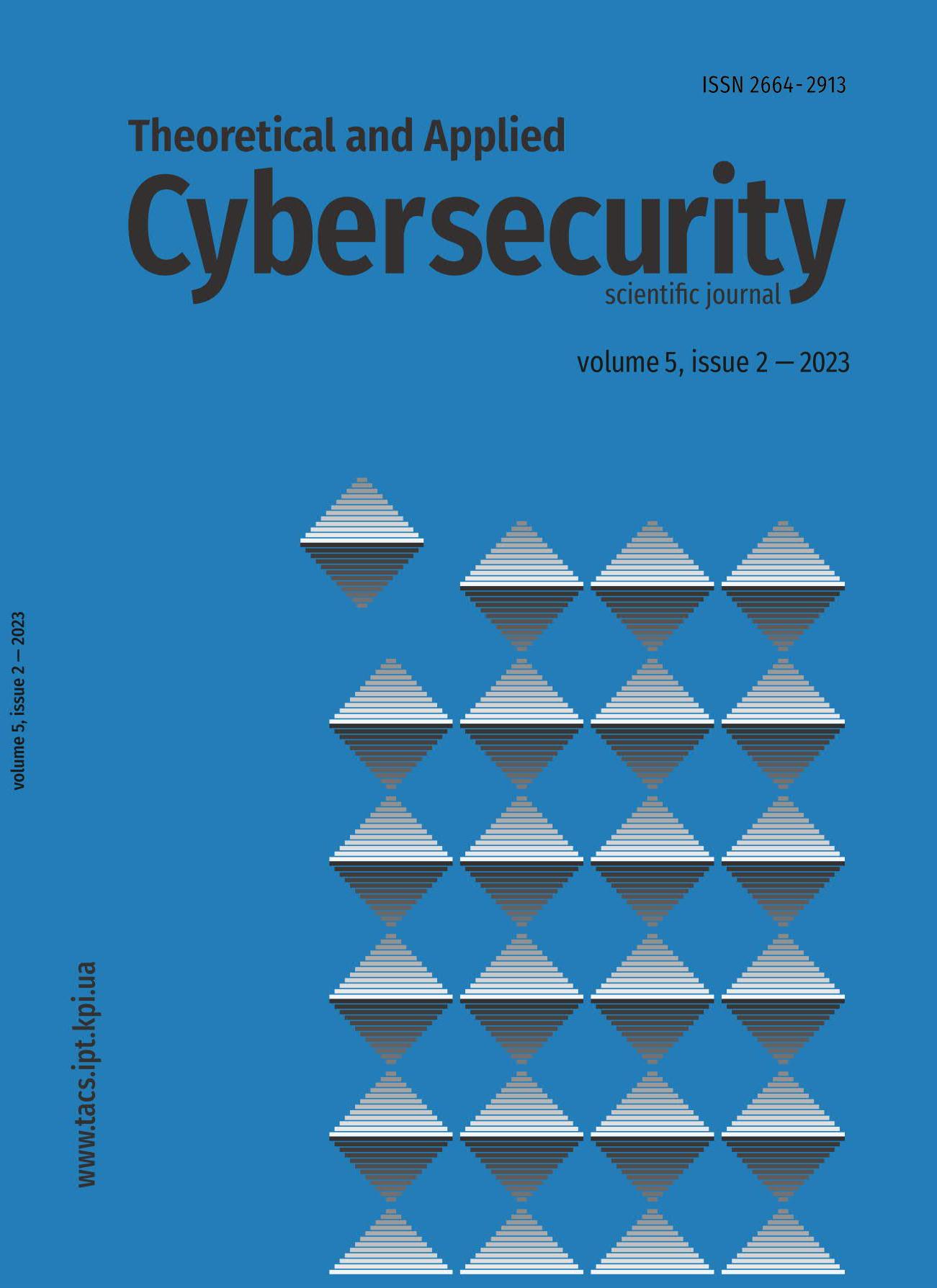Detection of Unauthorized Actions in Networks Using Wavelet Analysis
DOI:
https://doi.org/10.20535/tacs.2664-29132023.2.277621Abstract
Signal processing techniques are used to analyze and detect network anomalies because of their ability to detect new and unknown intrusions. The paper proposes a method of modeling network signals for the detection of network anomalies, which combines wavelet approximation and the theory of system identification. To characterize the behavior of network traffic, fifteen functions are provided, which are used as input signals within the system. At the same time, it is assumed that security violations within the network can be detected by checking abnormal patterns of system functioning according to audit data.
Despite the fact that machine learning methods have achieved significant results in detecting network anomalies, they still face the difficulty of using the implemented algorithms, in the presence of differences in the behavior of the training data and test data, which in turn leads to inefficient performance of the algorithms. This effect is exacerbated by the limitation of algorithms to detect previously unknown types of attacks due to the large number of false positives.
The paper develops a new method of modeling network signals for detecting anomalies in networks using wavelet analysis. In particular, the general architecture of the approach consists of three components: feature analysis, modeling of normal network traffic based on wavelet approximation and prediction using ARX model, intrusion or non-intrusion decision making
The result is evaluated using the DARPA intrusion detection dataset, which performs a comprehensive analysis of the intrusions in the dataset. Evaluation results show that this approach provides a high level of detection of both instances and types of attacks.
Downloads
Published
Issue
Section
License
Authors who publish with this journal agree to the following terms:
Authors retain copyright and grant the journal right of first publication with the work simultaneously licensed under a Creative Commons Attribution License that allows others to share the work with an acknowledgement of the work's authorship and initial publication in this journal.
Authors are able to enter into separate, additional contractual arrangements for the non-exclusive distribution of the journal's published version of the work (e.g., post it to an institutional repository or publish it in a book), with an acknowledgement of its initial publication in this journal.
- Authors are permitted and encouraged to post their work online (e.g., in institutional repositories or on their website) prior to and during the submission process, as it can lead to productive exchanges, as well as earlier and greater citation of published work (See The Effect of Open Access).

